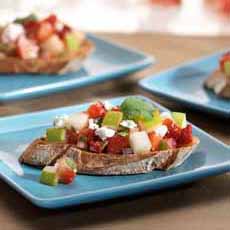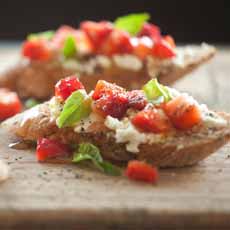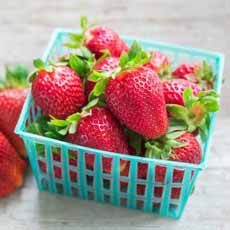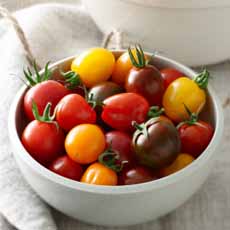TIP OF THE DAY: Make A Recipe You’ve Been Saving “For The Right Time”
|
We have the bad habit of collecting recipes. Not making them, mind you, just collecting them. Whether torn from magazines or saved digitally, we have so many recipes, we could publish a cookbook series called “Recipes We Never Tried.” Yesterday, we tore from The New York Times the this recipe for namoura, a Lebanese semolina pan cake, soaked in a flavored sugar-syrup and garnished with almonds. It sounded delicious and we wanted to try it, but we wondered if we’d ever get around to making it. And then we created a tip for ourselves: A Really Good Idea Once a month, go through the collection of Recipes We Never Tried and make one, just one. At the same time, toss 10 recipes we’re not likely to make anytime soon, if ever. If you do this on a Friday night or Saturday morning, you have the weekend to cook the chosen recipe. Following the accounting principle of FIFO—first in, first out—we’re making namoura on Saturday. If we don’t get to Kalustyan’s for lavender extract, we’ll use rose water. What We’re Tossing Today Digging through the pile, we came across the recipe below, from Whole Foods. We’re not sure why we saved it; we make crostini with goat cheese and strawberries often. But since it’s summer and strawberries are a nice summer crostini topping, before we hit the delete button, we share it with you, adapted from the original. More Summer Crostini Suggestions Try this BLT guacamole crostini recipe with juicy summer heirloom cherry tomatoes. For entertaining, set up a DIY crostini bar (or if you’re outdoors near a grill, a DIY bruschetta bar. The difference between crostini and bruschetta starts with the bread: crostini is toasted; bruschetta is rubbed with a garlic clove, brushed with olive oil and grilled. RECIPE: GOAT CHEESE & STRAWBERRY OR TOMATO CROSTINI Ingredients |
[1] and [2] The crostini recipe (photos courtesy Whole Foods) with [3] strawberries (photo courtesy Good Eggs). Or, [4] substitute tomatoes for the strawberries (photo courtesy Sunset Produce). |
|
|
1. SPREAD the toasted baguette slices with goat cheese and top with strawberries and basil, pressing to help the strawberry pieces adhere. 2a. DRIZZLE with olive oil and balsamic vinegar and sprinkle with basil and a generous amount of black pepper. 2b. VARIATION: Instead of drizzling, toss the diced berries and basil in oil and vinegar. The variation makes the crostini less drippy than if they were drizzled with oil and vinegar; and it better integrates the strawberries and basil. The net taste remains the same. These terms are often used interchangeably, but there is a difference: Hors d’oeuvre, pronounced or-DERV, a French term that refers to finger food(s) served with drinks prior to the meal. The name means “outside the work,” i.e., not part of the main meal. Hors d’oeuvre were traditionally one-bite items, artistically constructed, like canapés (a subgroup of hors d’oeuvre). Today, in the U.S., the category of has expanded to include such bites as mini quiches and tarts, skewers, baby lamb chops, stuffed mushrooms, etc. Note that in French, there’s no extra “s” for the plural: It’s the same spelling as the singular form. An appetizer is a first course, served at the table and, in larger portions than hors d’oeuvre. While you can plate multiple hors d’oeuvres as an appetizer, an appetizer can be many things—from a crab cake to a plated slice of quiche to a salad (in the U.S.—the French serve salad after the main course). What about crackers and cheese, crudités and dips, salsa and chips, and other American snack foods served with pre-dinner drinks? Since they are finger foods, technically you can call them hors d’oeuvre. Or, as the French might say (sneer?), American hors d’oeuvre.
|
||






